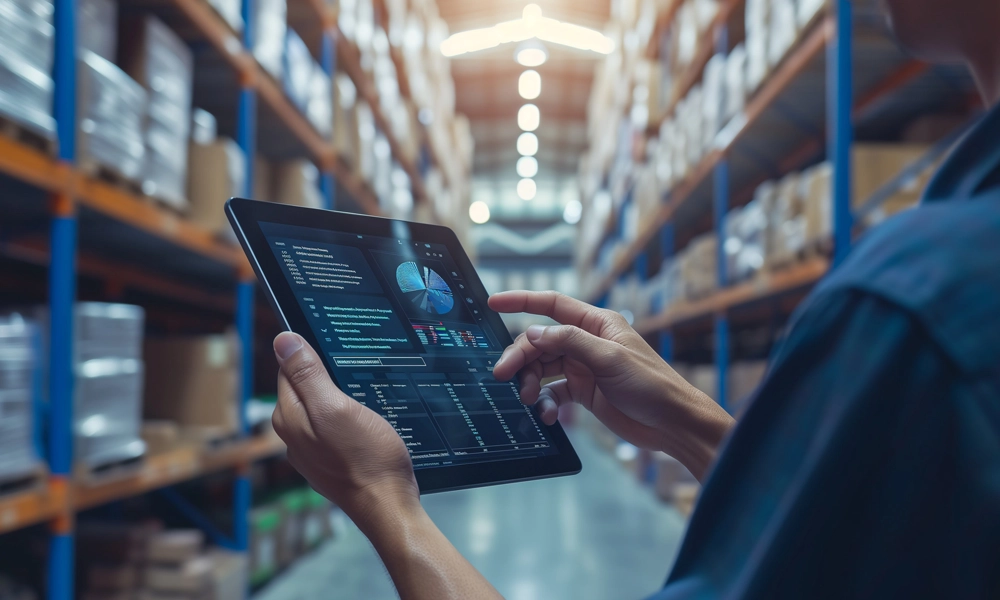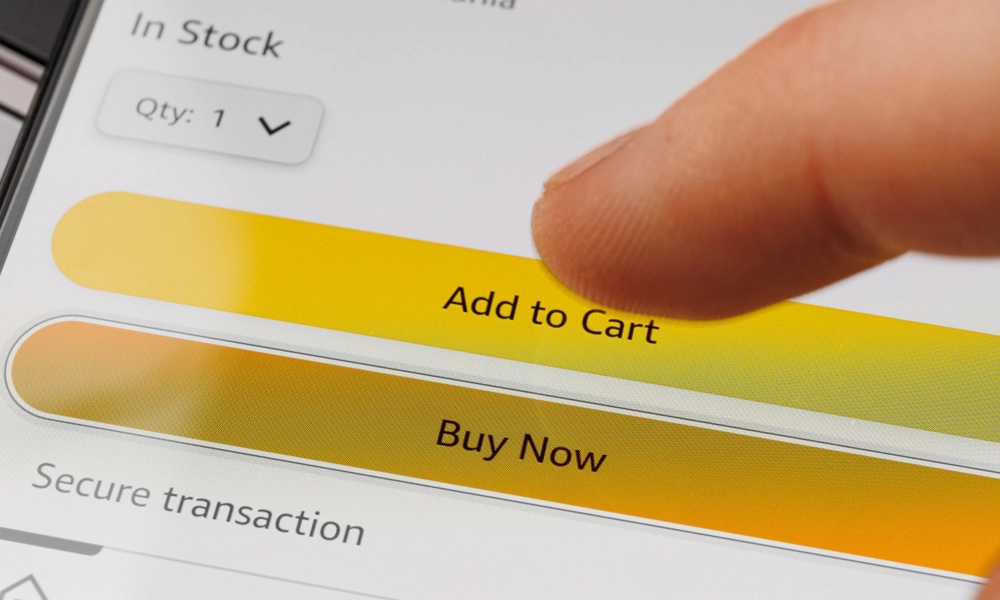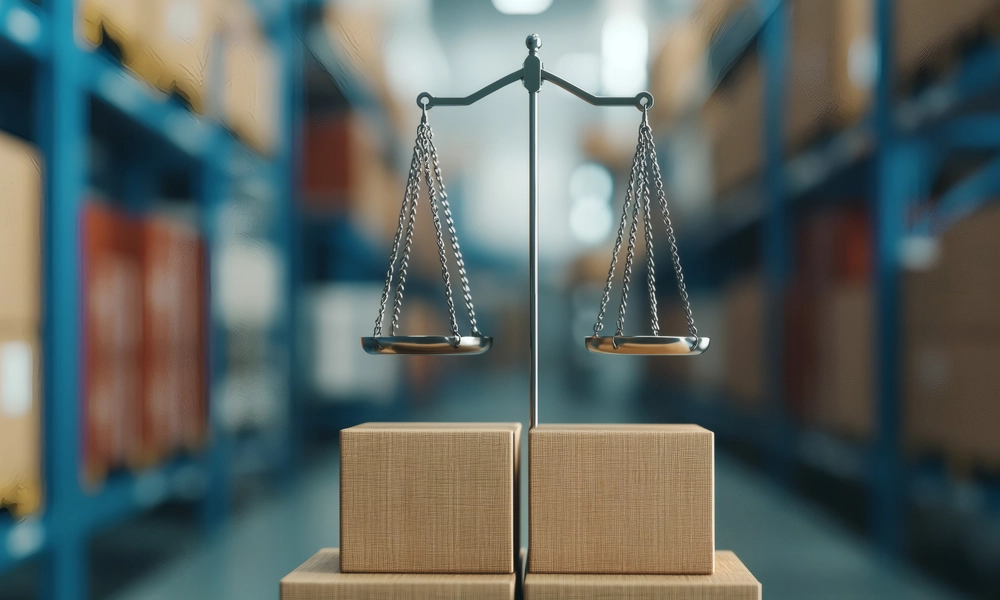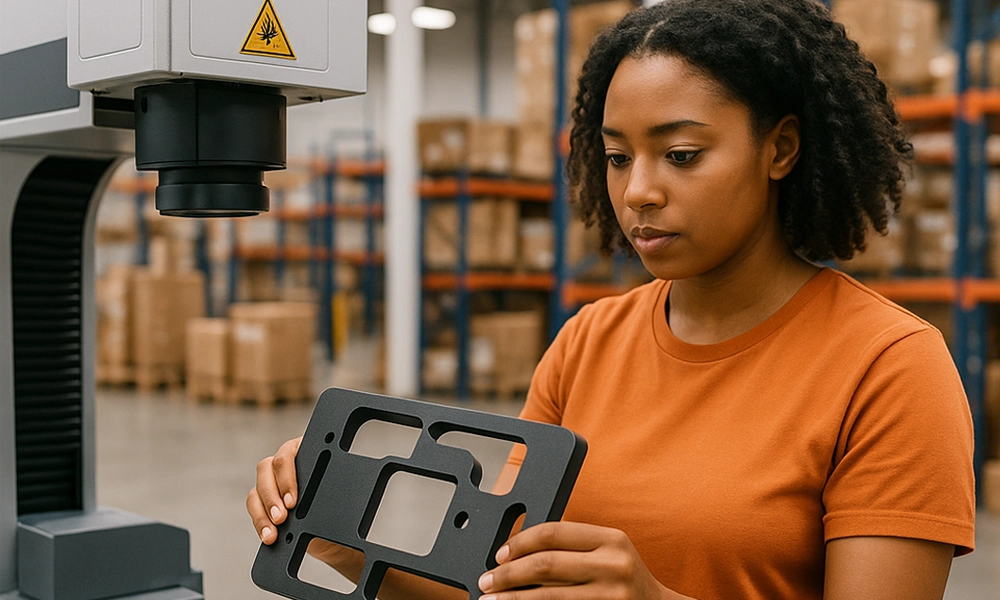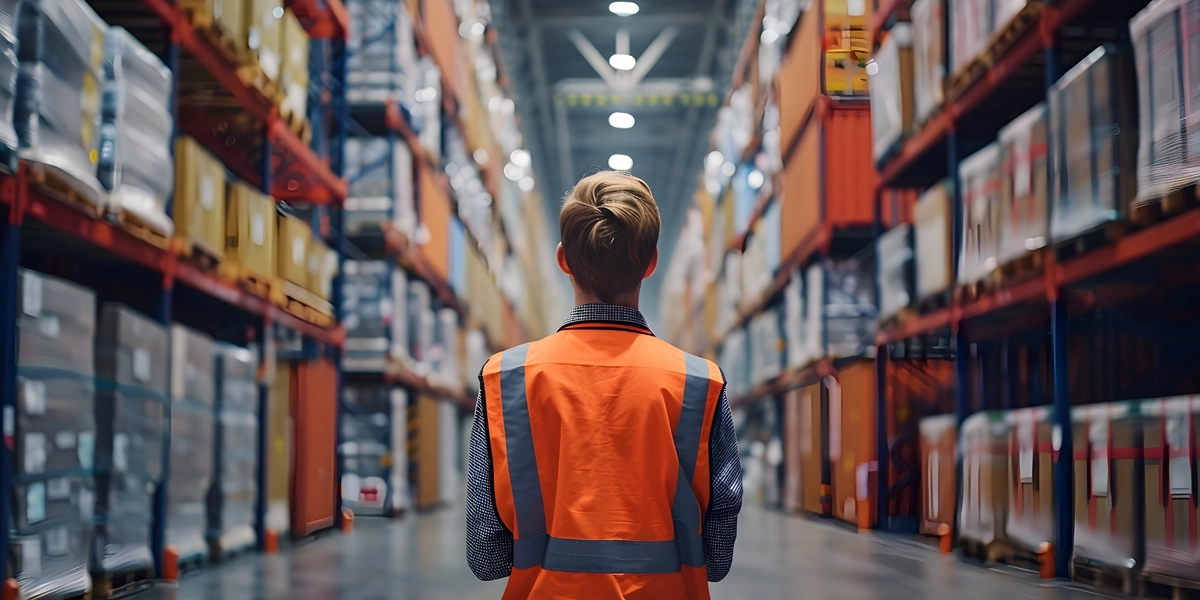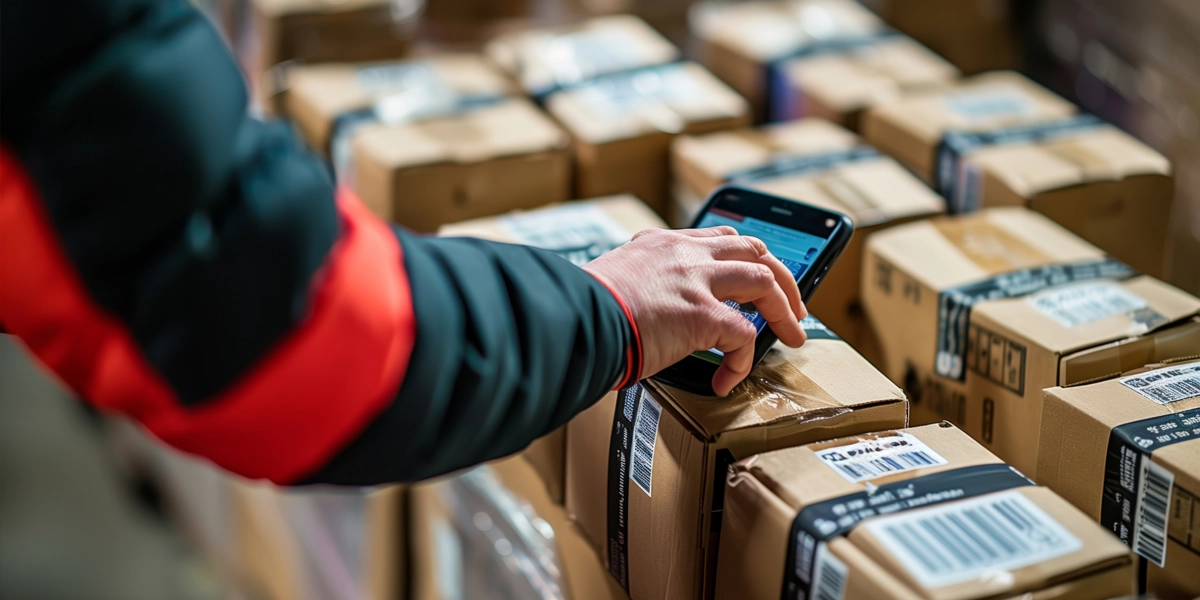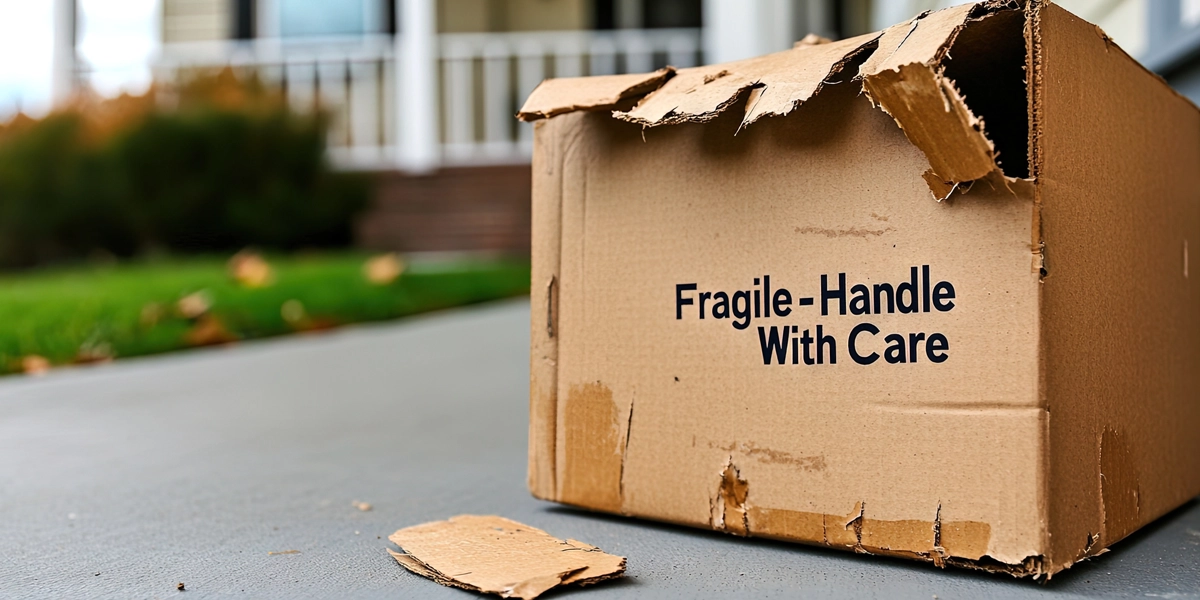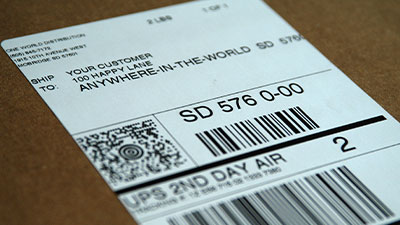In This Article:
The logistics landscape is rapidly evolving as we move into 2025 and beyond. Ecommerce brands must stay ahead by understanding key drivers that shape the future of logistics. Working with a capable 3PL will help you capitalize on new innovations in logistics, improve fulfillment experiences, and lower operating costs.
 Before we explore 5 key industry trends, you need to know and hear from Amber Fullerton, One World Direct’s Chief Customer Officer, about how to shape your fulfillment strategy. For two decades, she’s been on the front lines helping clients drive performance and navigate this complex landscape.
Before we explore 5 key industry trends, you need to know and hear from Amber Fullerton, One World Direct’s Chief Customer Officer, about how to shape your fulfillment strategy. For two decades, she’s been on the front lines helping clients drive performance and navigate this complex landscape.
By listening closely to client pain points, spotting industry trends early, and championing proactive change, Amber Fullerton helps OWD stay ahead of the curve and ensures our clients do too.
How a Chief Customer Officer Shapes Fulfillment Strategy: Q&A with Amber Fullerton
Amber:
I speak with nearly all our prospective clients and pay close attention to recurring pain points and trends. One of the most common issues I hear is poor communication from other 3PLs, whether it concerns inbound shipments, missed Service Level Agreements (SLAs), or order-related problems. That feedback directly informs our strategy. We’ve invested significantly in building a client services team that acts as an extension of our clients’ businesses, not just a support line.
Another major area is service levels. We spend time forecasting and planning with clients, especially ahead of Q4, to avoid missing SLAs. It’s not just about reputation; there are real costs involved, like retailer chargebacks. So, being proactive and reliable is essential.
Postage is another constant challenge. Carriers constantly adjust rates, delivery windows, and surcharges. Our goal is to create predictable and transparent postage strategies that help reduce confusion and give our clients more confidence in their pricing.
Amber:
- Postage volatility: Carriers keep changing their products and pricing, so staying ahead of that is key.
- Tariffs: These continue to affect landed cost and product strategy, especially for import-heavy brands.
- Product Personalization: We’re seeing a clear upward trend in clients wanting to offer personalized or customized products.
Amber:
Absolutely. Every week, we see more brands reaching out with some level of interest in personalization. It’s no longer enough to offer a generic product. Brands are looking for competitive ways to stand out. If we can fulfill personalized orders, run their call center, and manage both DTC and B2B from a single location, it’s a massive cost and efficiency win for them.
Amber:
We don’t have a formal feedback loop, but our structure naturally creates one. There’s a strong relationship between our client services and operations teams. Feedback is constantly flowing up to the executive team, and we act on it quickly when it makes sense. If a request benefits one client, it often helps many. Our motto is: say “yes” as often as we can.
Amber:
Clients are more price-sensitive when it comes to shipping. Postage rates have skyrocketed, forcing brands to rethink what’s really necessary. Two-day shipping was once the gold standard, but now we’re seeing a shift. Brands are open to slower shipping if it means better margins and simpler operations. Amazon set unrealistic expectations, but many brands realized that the cost and complexity of meeting those expectations aren’t worth it.
From personalization to rising shipping costs, Amber made one thing clear: ecommerce brands can no longer afford to operate on autopilot. Flexibility, foresight, and fast decision-making are essential.
Amber’s front-line perspective highlights the constant pressures ecommerce brands face, like rising costs, changing customer expectations, and operational complexity. But these challenges also reveal the bigger picture: a logistics landscape in transition.
To stay competitive, brands need to anticipate what’s next. Let’s dive into five trends shaping the future of logistics and fulfillment.
1. Resilience as a Priority in Logistics
Logistics resilience is now essential for ecommerce brands. The world has experienced major disruptions—pandemics, port closures, weather events, and geopolitical conflicts. These shocks have revealed the vulnerabilities of supply chains that lack contingency plans.
Why Resilient Supply Chains Matter
- Customer trust relies on dependable delivery: When orders don’t arrive as promised, buyers lose confidence quickly.
- Revenue is at risk: Delays or out-of-stocks result in lost sales and can harm your brand reputation.
- Competitive advantage: Brands that recover swiftly from disruption gain loyal fans and outperform slower competitors.
Brands like Adidas and Apple have made headlines by quickly shifting suppliers or rerouting shipments during crises, keeping shelves stocked while others faltered.
Building True Supply Chain Resilience in 2025
Supply chain resilience in 2025 means being adaptable and prepared for anything, not just responding after the fact.
Key strategies include:
- Diversification: Avoid dependence on a single supplier, factory, or region. Source inventory from multiple vendors or locations worldwide.
- Inventory Buffering: Maintain safety stock at key hubs to absorb sudden spikes or delays. Utilize real-time data to adjust stock levels based on emerging risks.
- Technology Integration: Invest in tools that identify bottlenecks early, such as predictive analytics and shipment tracking platforms.
- Scenario Planning: Outline “what if” scenarios (strikes, natural disasters, shipping bans). Create clear playbooks for each situation so teams can act swiftly.
- Distributed Inventory: Implement a distributed inventory model to strategically position stock closer to end markets. This approach reduces shipping times and minimizes disruptions caused by localized issues like port congestion or transportation delays.
Takeaway: Prioritizing logistics resilience safeguards your brand’s reputation, enables consistent customer satisfaction, and establishes a solid foundation for confident growth amidst evolving complexities in supply chains.
2. Big Data Analytics Driving Smarter Supply Chains
Big data in logistics is turning supply chains into intelligent, proactive engines for growth. Ecommerce brands now rely on supply chain analytics to react faster, cut costs, and keep customers happy, even when surprises hit.
How Big Data Analytics Powers Logistics
Predicts Disruptions
By analyzing millions of data points—weather patterns, port congestion, labor strikes—brands can spot trouble early. For example, when the Suez Canal was blocked in 2021, shippers with real-time analytics rerouted shipments days ahead of competitors.
Optimizes Every Step
Smart software learns from sales spikes, shipping delays, and inventory turnover. This means fewer stockouts or overstocks. Brands like Allbirds use demand forecasting tools to time restocks around seasonal trends and reduce wasted storage costs.
Partnering With Risk Analytics Firms
Proactive Problem Solving
Many ecommerce brands now work directly with risk analytics companies. These partners scan global news and shipping data 24/7. For instance, risk alerts trigger instant reroutes or supplier switches if a typhoon threatens Asia-Pacific ports.
Real-World Example
Outdoor gear retailer REI leverages supply chain analytics partners to monitor wildfires and weather events that could disrupt West Coast deliveries. With early warnings, they shift inventory between warehouses for fast fulfillment.
Benefits for Ecommerce Brands
Stronger Demand Forecasting
Instead of guessing what will sell next month, big data reveals buying trends by region, channel, and even customer segment. Brands like Glossier use these insights to launch new products confidently and avoid dead stock.
Smarter Inventory Management
Real-time tracking means knowing exactly how much product sits at each warehouse or retail location. This visibility helps brands balance speed with cost, keeping shelves full without expensive overstock.
Supply chain analytics transforms guesswork into precision and agility. Ecommerce brands that harness these tools deliver on promises while building margins, a direct path to turning logistics from a cost center into a profit engine.
3. Internet of Things (IoT) Transforming Supply Chain Visibility
IoT in logistics is unlocking a new level of supply chain visibility—turning every shipment, vehicle, and warehouse into a source of real-time insight. Brands now see what’s happening across their global networks as it unfolds, not just after the fact.
How IoT Sensors and Cloud Apps Power Real-Time Tracking
IoT devices are reshaping logistics with continuous monitoring and communication capabilities. Here’s how they contribute to various aspects of the supply chain:
- Shipment Tracking: Smart sensors attach to pallets or packages, reporting their exact location and environmental conditions (like temperature for perishables) every step of the way.
- Vehicle Monitoring: GPS-enabled devices inside delivery trucks log routes, speeds, stops, and even driver behavior, helping prevent delays or loss.
- Warehouse Automation: Connected devices track warehouse inventory movement, so you always know stock levels without manual checks.
- Personnel Safety & Efficiency: Wearable IoT badges can monitor worker location and safety compliance in large facilities.
For ecommerce brands managing hundreds or thousands of daily orders, these tools mean fewer lost shipments and faster response if something goes wrong.
Elevating Transparency and Responsiveness
With real-time data from IoT devices:
- Brands spot bottlenecks instantly, like unexpected port delays or traffic jams.
- Customer service teams can provide live updates to shoppers waiting for urgent deliveries.
- Inventory systems update automatically as goods move in and out, reducing errors.
Major retailers like Amazon use IoT sensors in fulfillment centers to direct robots to pick and pack orders. Smaller brands leverage 3PL partners with IoT-equipped fleets for similar benefits, without huge upfront investment.
Supply chain visibility isn’t just about tracking packages—it builds trust. Shoppers today expect transparency and reliability. Brands that deliver on both set themselves apart in a crowded online marketplace.
Embedding connected devices throughout the supply chain gives ecommerce businesses the actionable data needed to stay agile and ready to pivot when demand spikes or disruptions arise. Brands that leverage IoT are better equipped for what’s next, whether that’s shifting consumer expectations or new regulatory demands.
4. How Artificial Intelligence (AI) is Transforming Logistics Operations
The role of Artificial intelligence in logistics is reshaping how ecommerce brands operate. AI applications are making supply chains smarter and more efficient.
Key AI Applications in Logistics
Some of the key areas where AI is being applied in logistics include:
- Route optimization: AI algorithms analyze traffic patterns and weather conditions to find the fastest and most efficient delivery routes.
- Demand forecasting: Accurately predicting customer demand helps maintain optimal stock levels, reduce waste, and ensure timely delivery.
- Asset management: Monitoring and managing assets like vehicles and warehouses to maximize efficiency and reduce downtime.
- Smarter inventory control: AI can track inventory in real-time, predict shortages, and automate restocking processes.
- Computer vision: Using cameras and sensors to enhance warehouse operations by identifying damaged goods or optimizing layout for faster retrieval.
These AI-driven enhancements significantly impact ecommerce fulfillment speed and accuracy. With personalized orders becoming the norm, the ability to process these quickly and correctly is crucial for customer satisfaction.
Real-World Examples of AI Impacting Logistics
For example, a company using AI for route optimization can ensure quicker deliveries, even during peak seasons or adverse weather conditions. Similarly, computer vision can help maintain product quality by automatically detecting defects before items leave the warehouse.
Leading brands like Amazon have already integrated AI into their logistics operations, setting a benchmark for others to follow. The result is streamlined processes that minimize errors and improve overall efficiency.
5. Sustainability Focus Becoming Essential in Logistics
Sustainable logistics trends are now a core part of supply chain management. Ecommerce brands face mounting pressure from both regulators and consumers to adopt green supply chain management practices that reduce environmental impact and show a real commitment to the planet.
Drivers Pushing Sustainability Front and Center
40%
of shoppers would pay more for eco-friendly items during the holiday shopping season.
- Regulatory requirements: Governments worldwide have set stricter emissions targets for transportation, packaging, and warehousing. From California’s Advanced Clean Fleets rule to the European Union’s Green Deal, compliance is no longer optional.
- Consumer expectations: Shoppers increasingly want eco-friendly shipping and expect brands to back up their sustainability claims. According to a 2023 Shopify survey, 40% of shoppers would pay more for eco-friendly items during the holiday shopping season, and 43% were more willing to buy from brands with sustainability practices such as low-waste business operations and carbon-neutral shipping.
- Brand reputation: Sustainable practices can become a key differentiator, helping ecommerce businesses stand out in crowded markets. Brands like Allbirds and Patagonia have built loyal followings by leading on climate-conscious logistics.
Green Technologies Reshaping Logistics
Adopting new technologies is at the heart of sustainable logistics trends:
- Alternative fuels: More delivery fleets are switching to renewable diesel, compressed natural gas (CNG), or even hydrogen-powered trucks. UPS reports a 20% reduction in fleet emissions after adding CNG vehicles.
- Electric vehicles (EVs): Giants like Amazon and FedEx have pledged to make entire delivery fleets electric by 2040. EVs slash both carbon emissions and noise pollution on last-mile routes.
- Smart route planning: AI-powered tools help reduce miles traveled and cut fuel use by optimizing delivery paths—saving money while shrinking carbon footprints.
- Eco-friendly packaging: Biodegradable materials, right-sized boxes, and reusable containers are gaining traction among fulfillment providers aiming to minimize waste.
Real-World Impact for Ecommerce Brands
Ecommerce stores working with green supply chain partners see measurable benefits:
- Lower shipping costs as energy-efficient options become mainstream
- Enhanced customer loyalty driven by visible commitment to sustainability
- Easier access to new markets where eco-regulations are strict
Investing in sustainable logistics trends helps ecommerce businesses meet rising standards today and positions them for growth as the world moves toward greener supply chains.
The Next Big Thing: Personalized-to-Consumer (P2C) Fulfillment
What is P2C Fulfillment?
 Personalized-to-Consumer (P2C) logistics means every order is packed and shipped with the end customer’s unique preferences in mind. The 3PL handles complete product personalization designed by the shopper and fulfills the orders. Customers can personalize goods with custom engravings, embroidery, or direct-to-object printing. They can also customize packaging and include personalized gift cards for the ultimate unboxing experience.
Personalized-to-Consumer (P2C) logistics means every order is packed and shipped with the end customer’s unique preferences in mind. The 3PL handles complete product personalization designed by the shopper and fulfills the orders. Customers can personalize goods with custom engravings, embroidery, or direct-to-object printing. They can also customize packaging and include personalized gift cards for the ultimate unboxing experience.
The P2C model is seeing wide adoption as ecommerce brands look for ways to move beyond standard dropshipping and mass fulfillment. Unlike traditional models that treat every package the same, P2C puts the customer at the center of each touchpoint.
Why Personalization Now Drives Brand Differentiation
Today’s shoppers expect more than just fast shipping; they want to feel special. Personalization delivers:
- Brand loyalty: A custom unboxing experience increases repeat purchases. For example, beauty brands often include free samples or personalized product recommendations based on past orders.
- Higher perceived value: Products feel premium when they arrive with thoughtful extras, like eco-friendly wrapping or interactive QR codes linking to exclusive online content.
- Social sharing: Unforgettable packaging turns customers into brand advocates. Social posts featuring unique unboxing moments help drive organic growth.
Moving Beyond Dropshipping
Dropshipping focuses on speed and cost, but lacks control over packaging and personal touches. P2C fulfillment gives brands more say in how their products are presented and perceived.
- Subscription boxes can use P2C for curated assortments.
- Apparel brands add customized thank-you cards or monogramming options.
- Health supplement companies include usage guides tailored to customer goals.
Preparing Your Ecommerce Brand for the Future of Logistics
To stay ahead in the evolving logistics landscape, ecommerce brands should:
- Embrace resilience: Build robust supply chains to navigate global disruptions.
- Integrate technology: Utilize AI and IoT for smarter operations and real-time tracking.
- Focus on sustainability: Adopt green technologies like electric vehicles to meet regulatory demands and consumer expectations.
- Adopt P2C fulfillment models: Leverage personalization to differentiate your brand.
Choosing a logistics partner for personalization is crucial.
One World Direct specializes in personalized fulfillment solutions that transform logistics from a cost center into a profit center. With expertise in P2C, high-touch client service, and hybrid fulfillment needs, OWD ensures your logistics are future-proof.
For ecommerce brands aiming to thrive in the future, embracing these strategies will be key. Connect with One World Direct for tailored solutions that elevate your business.
In This Article:
Subscribe to our Newsletter
Tincidunt urna mauris eu quam vulputate lobortis sit. Purus feugiat arcu nunc quisque massa ut.
